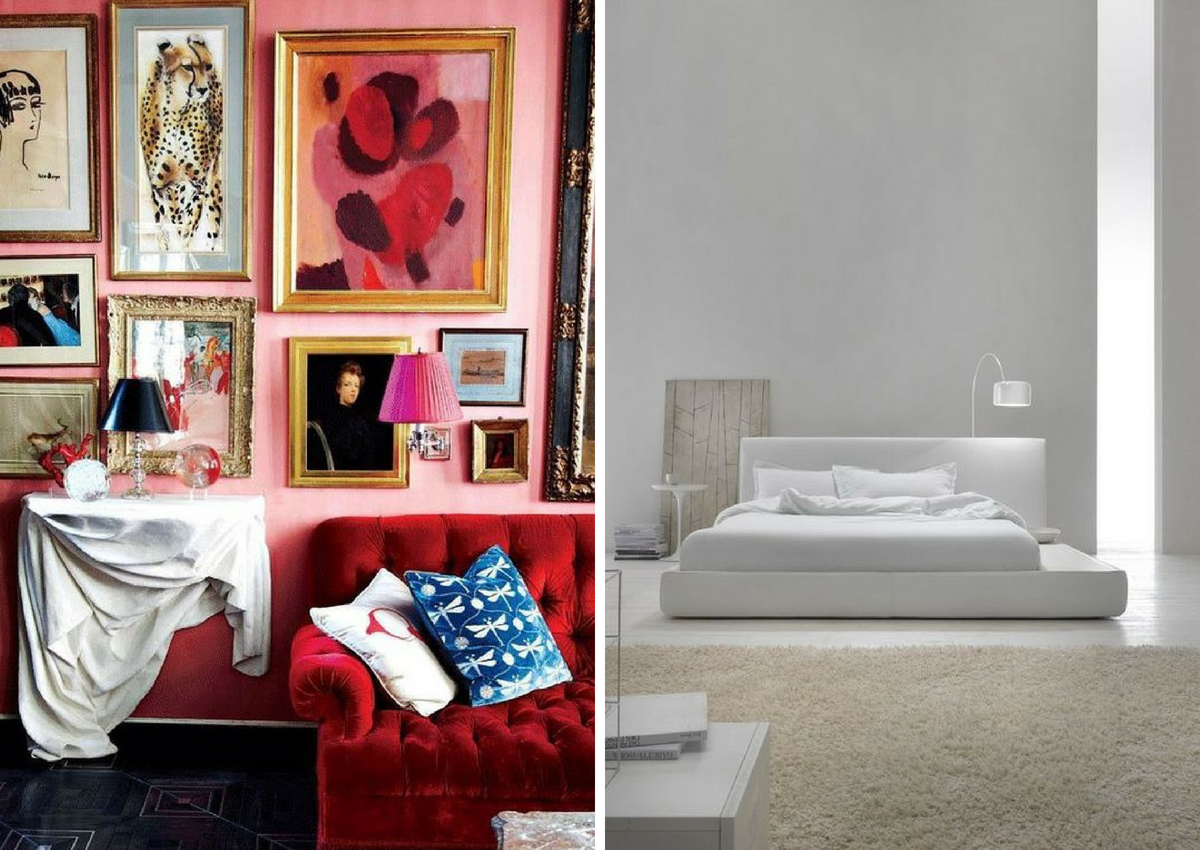By Maria Koulourioti,
Some may say less is more, while others agree that less is a bore. These days, an arising trend of minimalism appears to be in style everywhere. There’s an awful lot of stuff around for something that’s all about reduction and “less is more.” The phrase is today used to describe a wide range of ideologies, goods, or lifestyle choices, from the desire to own fewer possessions to the ultimate form of pared-down minimalism monk-like austerity. The aesthetic vocabulary of gentrification is minimalism. Modern society favors minimalism over all other types of artistic expression, notably maximalism. But what price do we pay for our fixation on graphic simplicity? Our creative progress is being stifled by the rigid dedication to extreme simplicity that the current state of design supports.
When most people think of minimalism, they think of the Japanese: crisp lines, zen simplicity, and a master’s precise, methodical brushstrokes. What people forget is that Japan is also the birthplace of some of the world’s most outlandish maximalist designs. There is a Yayoi Kusama for every Marie Kondo (who encourages subtracting what does not spark joy), with his obvious contrast that speaks to the natural balance between complexity and simplicity. According to history, one is an unavoidable reaction to the other’s dominance. When there is too much confusion, one seeks order. Too much organization might make one feel suffocated. To understand how we as designers got to the conclusion that minimalism is the superior design discipline, we must begin at the outset. Many in the business feel that it is associated with good user experience and that maximalism would immediately obstruct that aim.
Additionally, minimalism is frequently employed as a shortcut to a positive experience; its core precepts of negative space and simplicity allow users (at least in the west) to attain their goals more efficiently as a consequence. Even a little, dull-grey button floating in a sea of white is difficult to overlook. Adequate minimalist design does need considerable thinking, yet once perfected, simplicity is simple to imitate. It is also simple to replicate with minimal skill. Consider the well-known little black dress. Extremely sleek and stylish. But, it also requires relatively little work or thinking to purchase and wear. You may look wonderful but you will also appear to be the same as every other person at the party. The sad side consequence of our devotion to minimalism is that we have conditioned people to be fearful of risk. We have stomped out the notion of several typefaces and cluttered backgrounds, so we now have to battle for every crumb of distinctiveness.

In his Theory of Color, Goethe argued in 1810 that in barbaric countries, ignorant people, and children enjoy brilliant colors but people of refinement shun color in their clothing and endeavor to eliminate color from the items around them. And they are linked to aesthetics or the concrete representations of delight in our culture. This has its origins in colonialism. So you had a bunch of Europeans getting on boats and sailing around the world trying to conquer other peoples, and when they came across these uninhibited displays of emotion when they came across festivals and dancing and drumming and colorful dwellings and outfits, they felt compelled to distance themselves from those behaviors. Moreover, numerous people feel that the concept of minimalism in the art world represents fresh beginnings, rather than a void of less.
So simplicity and consumerism are not necessarily in opposition. Throwing away everything you own and living on less money may appear to be an act of anti-consumerism revolt, but when the proper new items are purchased and the right austere aesthetic is followed, it also becomes the new norm. As a result, European civilization started to become more and more emotionally restrained. Minimalism has been the prevailing aesthetic throughout the past few years. Yet, maximalism does not mean overindulging in material or other resources. Being passionate about color, pattern, and collecting, as well as decorating, creating, and combining materials wildly, is what it comes down to. Maximalism may help lead to a low-waste lifestyle by recycling old items for decorating, gathering “meaningless” fragments of common objects that we frequently put away, and combining them to create something unique while cherishing the emotions they evoke. Adding old tickets to a collage and a frame are two examples
When you are unable to decrease any further, subtracting requires discipline. The organization is sparked by minimalism, giving everything like houses, clothes, buildings, and communities a polished appearance. Several things, like focus, self-control, and even creativity, may benefit from it. “Art lives on restraint and dies of freedom,” as Michelangelo once stated. And it is true that when their limitations are reached, a lot of individuals do fantastic things. The best gift we can give our art is individuality when we talk about design and the idea of adorning our homes with everything that inspires us (such as vibrant colors, paintings, and decorations). Being distinctive is not as crucial as remaining loyal to oneself. Do not hold back if minimalism is how you want to express yourself. Personally, I prefer to think of maximalism as an extension of your psyche. Maybe some people prefer space to complexity, but chaos doesn’t necessarily mean disorder. Maximalism can be described as one’s personal antidote to the sameness that is encouraged in modern society when norms tend to kill creativity. Do not embrace simplicity simply because it’s easy. Embrace it because it is who you are.
References
-
Yayoi Kusama at 90: How the ‘undiscovered genius’ became an international sensation. edition.cnn.com. Available here
-
Maximalist Design and the Problem with Minimalism. toptal.com. Available here
-
Have we got minimalism all wrong?. bbc.com. Available here




